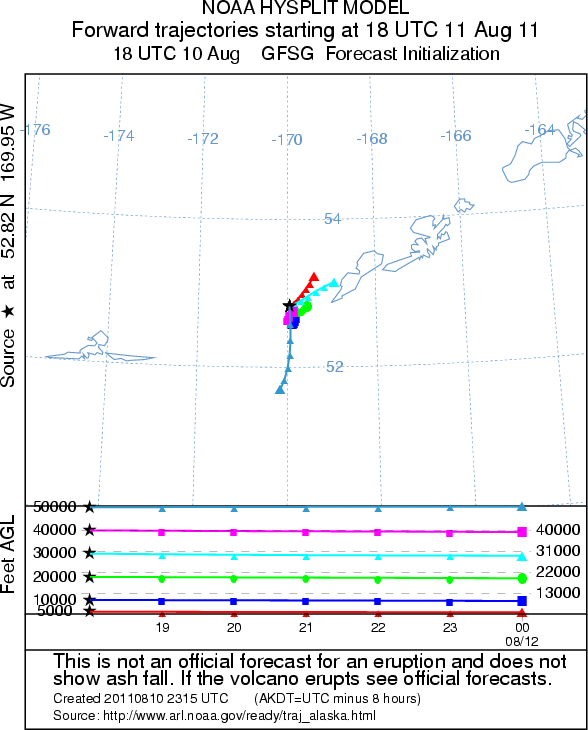
One of Alaska’s most active volcanoes has started erupting, according to the Alaska Volcano Observatory (AVO).
The 1,730 m (5,676 ft) high Cleveland Volcano, also known as Mount Cleveland, began erupting early on Tuesday. However, the stratovolcano’s remoteness is limiting opportunities for its study, reported the AVO which is relying heavily on satellites for monitoring.
According to the AVO: “Without a real-time seismic network on the volcano, AVO is unable to track local earthquake activity related to volcanic unrest, provide forecasts of eruptive activity, or confirmation of explosive, ash-producing events. AVO is monitoring the volcano using satellite data as it becomes available. Such data suggests that effusive eruption of the lava dome in the summit crater is possibly continuing.”
One of the most active volcanoes in the Aleutian Arc, Cleveland has erupted at least 21 times in the last 230 years. A VEI 3 eruption in 1944 produced the arc’s only direct volcanic fatality. Most recently Mount Cleveland has erupted three times in 2009, and twice in 2010.
The volcano is primarily hazardous to aircraft; many of the flights over the north Pacific approach the vicinity of the volcano, and volcanic ash released from eruptions can damage sensitive electronic equipment and sensors.
http://www.avo.alaska.edu/activity/Cleveland.php
2011-08-09 16:05:19 - Status Report
Thermal anomaly at the summit of Cleveland volcano observed overnight in several satellite images. Effusive eruption of lava dome in summit crater possibly continuing. AVO has received no additional information or observations about unrest at the volcano.
Without a real-time seismic network on the volcano, AVO is unable to track local earthquake activity related to volcanic unrest, provide forecasts of eruptive activity, or confirmation of explosive, ash-producing events. AVO is monitoring the volcano using satellite data as it becomes available.




